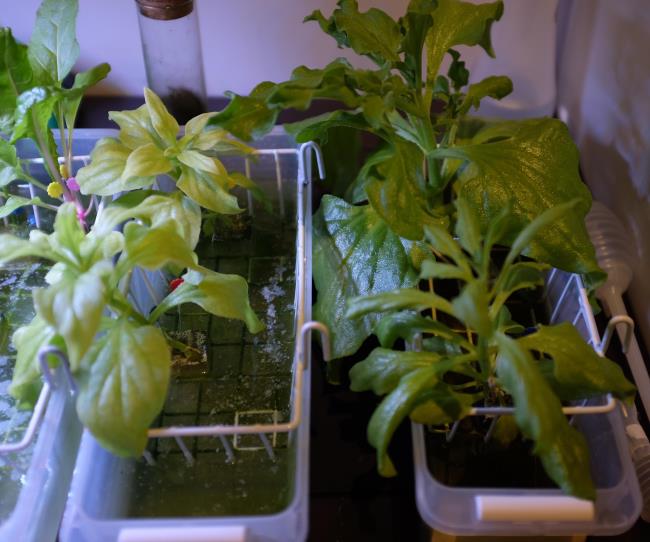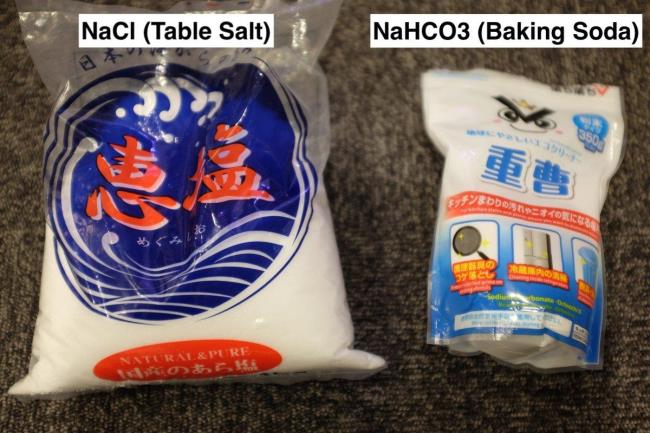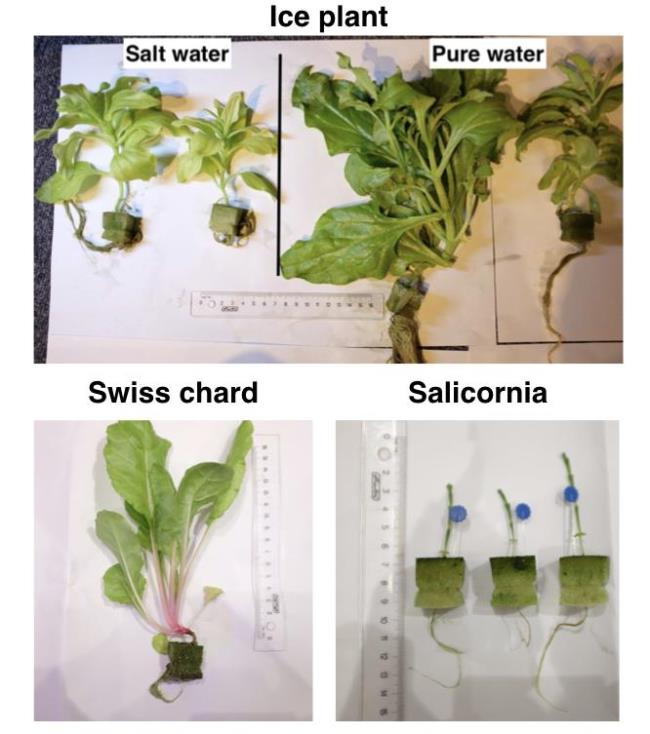- Enceladus is a satellite that seems to have a subsurface ocean.
- Three salt-tolerant plants were cultivated in simulated Enceladus’ water.
- Sprouts of every species could grow with the salt water.

Plants in the Enceladus tank and the pure water tank. Credit: Daigo Shoji
Enceladus is one of the moons of Saturn. Observations by the Cassini probe revealed that there is water vapour seeping out of cracks on Enceladus, and that this water vapour contains sodium salts and nano-silica, which strongly implies the existence of a subsurface ocean.
In the field of space-engineering, whether or not plants can grow on lunar or martian soil has been tested. In future space missions when people stay on the Moon or Mars for a long time, one important problem is how they can obtain their food. Growing plants directly on the Moon or Mars may be one solution. Although cultivation experiments with lunar and martian simulant (simulated soil) have been conducted, there is no work being done on growing plants with Enceladus’ water. This may be because Enceladus is a less practical body for humans to live on for a long time compared to the Moon and Mars.

Table salt (NaCl) and baking soda (NaHCO3) used for cultivation. Credit: Daigo Shoji
However, Enceladus’ water may be useful for checking plant growth here on the Earth. Salt in the soil has been a serious problem for agriculture and the ecosystem because the average plant cannot grow when the salinity of the soil increases. In order to solve this problem, the cultivation of salt-tolerant plants has been suggested. Several species of plant can grow even when salinity is high. Absorbing salt, they can decrease the salinity in the soil. In addition, the salt-tolerant plant itself can be harvested. As mentioned above, Enceladus’ water contains sodium salts such as NaCl and NaHCO3. If we can know the properties of salt-tolerant plants under Enceladus’ water conditions, we can compare what we learn to their cultivation in the terrestrial environment, which may be important for agriculture as well as botany.

Sprouts planted in saltwater tank. Credit: Daigo Shoji

Plants cultivated for around one and a half months with salt water. Because the chard’s stem
became brown, it was cultivated with pure water for two weeks. Credit: Daigo Shoji
Due to this motivation, I grew three salt-tolerant plants (ice plant, swiss chard, Salicornia) via hydroponics, simulating the chemical composition of Enceladus’ ocean. In the case where sprouts germinated with pure water were moved to the salt water with 3.3 % NaCl and 4 % NaHCO3—which is consistent with the salinity of Enceladus’ ocean—all plants could grow with the salt water. However, the growth rate of ice plants was suppressed compared to the plants cultivated with pure water. The base of the swiss chard’s stem became brown when it was moved to the salt water. Although chard is also a salt-tolerant plant, the base of its stem seems weak to salt water. This first test was performed with very loose conditions (e.g., lower pH (~8) than Enceladus’ ocean (pH=8.5-10.5) and germination with pure water). Cultivations with different salinity and chemical composition should be tested in future works.
Follow updates about the Enceladus Farm at: https://twitter.com/Enceladusfarm
Reference: Shoji, Daigo (2020) "Enceladus Farm: Can plants grow with Enceladus' water?" https://arxiv.org/abs/2003.14131
----
Author: Daigo Shoji is a planetary Scientist studying interior and surface dynamics of icy satellites and Mars at the Earth-Life Science Institute, Tokyo Institute of Technology and Institute of Space and Astronautical Science, JAXA.
